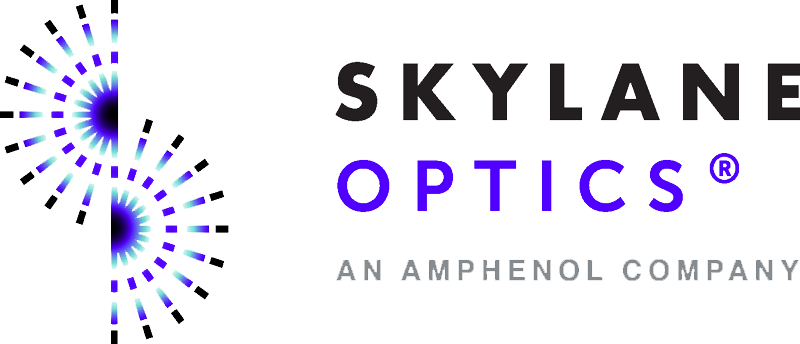Discover the different types of connectors available on the market!
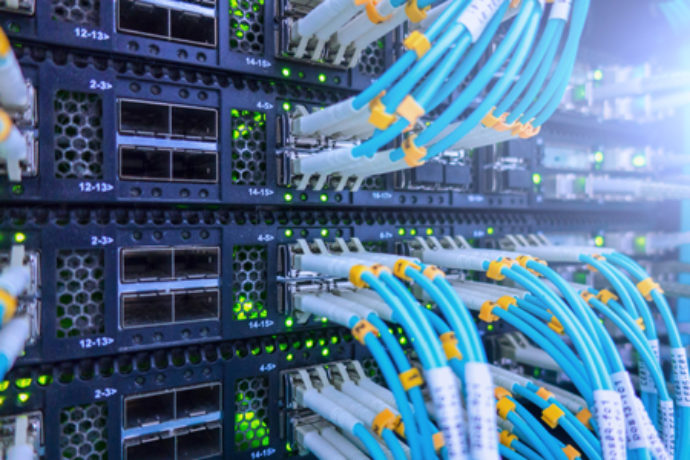
Optical transceivers come in many form factors and for many different applications. Taking this fact into account, different types of fibre and optical connectors have to be used.
This article will discuss the different types of connectors available on the market and which can be used with Skylane transceivers.
SC Connector
SC for Subscriber Connector or Square Connector or even Standard Connector
SC connectors use a Æ2.5mm ceramic ferrule and come with a locking tab that enables push on / pull off mating mechanism for quick insertion and removal.
Available in simplex or duplex versions, SC connectors can be used with both single-mode and multi-mode fiber cables. The SC connector is also available with the ferrule polished at an angle (usually 8degrees) and is then called SC APC (green casing).
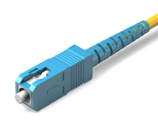
This connector type is frequently used for Fast ethernet and Gigabit ethernet point-to-point connections using bidi SFP transceivers. Older form factors, like X2 and XENPAK, are coming with SC connectors only.
LC Connector
LC stands for Lucent Connector as it was originally developed by Lucent Technologies. One big advantage is the compact size (about half the size of an SC connector), which allows for higher port density on patch panels and transceivers. The diameter of the ferrule is 1.25mm.
Available in simplex or duplex versions, LC connectors can be used with both single-mode and multi-mode fibre cables. LC APC is also available.

MPO Connector
The “Multi Fiber Push On” has been the primary multiple fibre connector for high-speed telecom and data communications networks. It has been standardized within the IEC 61754-7 and TIA 604-5.
Over the years, the MPO connector family has evolved to support a wider range of applications and system packaging requirements. MPO can be used with Single Mode fiber and generally comes with APC (Angled Physical Contact) or with Multi Mode Fiber with UPC (Ultra Physical Contact).
Now there are several more suppliers investing and developing products with new features and fibre counts. Originally a single row 12-fiber connector, there are now 8 and 16 single row fibre types that can be stacked together to form 24, 36 and 72 fibre connectors using multiple precision ferrules.
Unlike the SC or LC connector which are Male only, MPO connectors are coming in Male (with pins) and female (with guiding holes) versions. Notice that optical transceivers always come with male connector meaning that only female MPO patch cords can be used to connect transceivers.

What about Polarity?
An important property of MPO cabling is polarity. In order to accomplish a working optical connection, the transmitter of one device needs to be connected to the receiver of the other and vice versa. Typically, this means the fibres need to be crossed at some point along the link. There are three types present on the market:
1/ MPO Trunk Cable Type-A or Straight: The individual fibre positions at each terminals are the same.

2/ MPO Trunk Cable Type-B or Reversed: The individual fibre positions are reversed. On a 12-fiber cable this means the Position 1 on one terminal connects to Position 12 on the opposite terminal.

3/ MPO Trunk Cable Type-C or Pairs flipped: Type-C cables has adjacent fibre pairs crossed, Position 1 on one terminal connects to Position 2 on the other end. This may be useful when MPO Trunk cables are used to aggregate several duplex fibre pairs. This type is never used for optical transceiver connections.

MPO connector is a High-Density connector.
1/ MPO-12
The most common type of MPO connector has one row of 12 fibres, of which only 8 are used. It is typically used with SR4 and PSM4 transceivers.

2/ MPO-24 (MPO-12 two rows)
The fibre density can be doubled by adding another row of 12 fibres. In this case, 16 fibers are used. Typically used for SR8 QSFP-DD/OSFP transceivers.

3/ MPO-16
In this variant, one row of 16 fibres (all are used). Less used but can be found is some specific SR8 transceivers.

CS Connector
Not to mix with SC connector, the CS connector was designed by Senko Advanced Components and introduced as a replacement for current duplex LC connectors which are too bulky for newer generations of transceiver interfaces and to increase the connector density in patch panels.
Compared to a standard duplex LC connector, the CS connector has a 40% width reduction, which is a high value proposition especially in data centres where space is at a premium. It enables two duplexes in a single QSFP-DD/OSFP transceiver
The CS connector is designed for 2x 100G/200G connections and is available in OM3, OM4, OM4+, and OM5 Multi-mode, as well as Single-mode varieties.
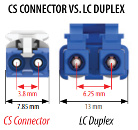

Two CS connectors can fit in to the same front panel space of a QSFP-DD/OSFP transceiver as a single duplex LC connector or multimode MPO ribbon cable would usually fit. The main benefit of using CS connectors in a QSFP28-DD transceiver consists in giving the possibility to double the port density of a high throughput switch.
SN connector
The SN connector is a new duplex optical fibre connector designed By Senko Advanced Components and for Data Centre 400G optimization. The SN connector was designed to provide individual and independent duplex fibre breakout at a quad style transceiver (QSFP, QSFP-DD, OSFP) as a more efficient, increased reliability, and a lower cost alternative than the MPO connector.

The design of the SN connector allows users to have four individual connectors with eight fibres in total, within a single QSFP, QSFP-DD and OSFP transceiver interface. The SN connector can be used for fiber applications such as PSM4, SR4, DR4, DR4+ and SR4.2 modules at the transceiver where MPO is commonly used now.

MDC Connector
The “Mini Duplex Connector” is a direct competitor to the SN Connector and is promoted by USCONNEC. Indeed, the MDC is a two-fiber connector manufactured with proven 1.25-mm ferrule technology used in industry standard LC connectors. Supporting port breakout architectures for emerging transceiver MSAs, the smaller size will allow a single array transceiver to accept multiple MDC patch cables which are individually accessible directly at the transceiver interface. The new format will support four individual MDC cables in a QSFP footprint and two individual MDC cables in an SFP footprint.
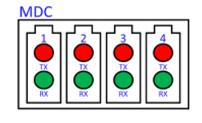
Skylane Optics transceivers and connectors
The below tab is condensed map of what is available at Skylane optics in term of transceivers together with the type of connector they used.
| Form Factor | Data Rate | Connector type |
| SFP, C-SFP | Up to 5G | SC, LC |
| SFP+, SFP28 | From 10G to 32G Fiber Channel | LC |
| QSFP+ | Up to 40G | LC, MPO |
| QSFP28 | Up to 100G | LC, MPO |
| QSFP-DD 200G | Up to 200G | LC, CS |
| QSFP-DD 400G | Up to 400G | LC |
| CFP, CFP2, CFP4 | Up to 400G | LC |
